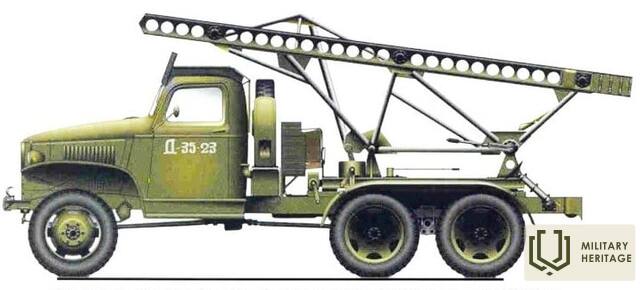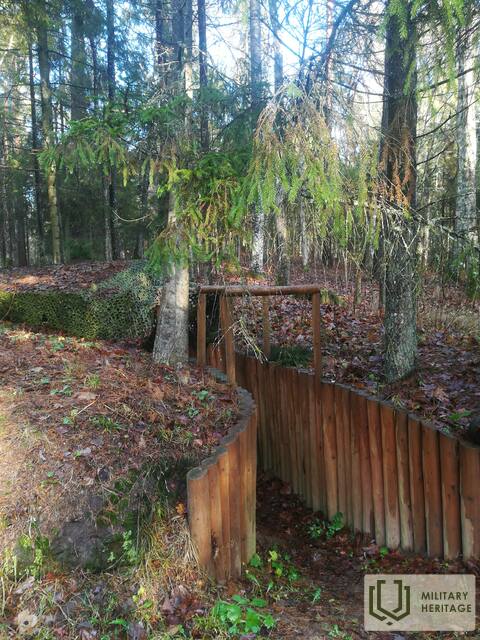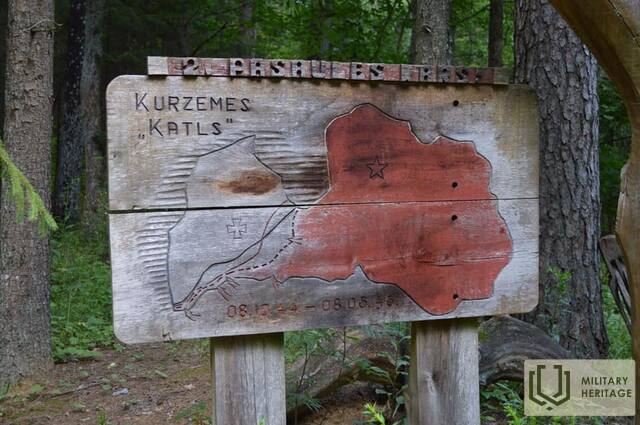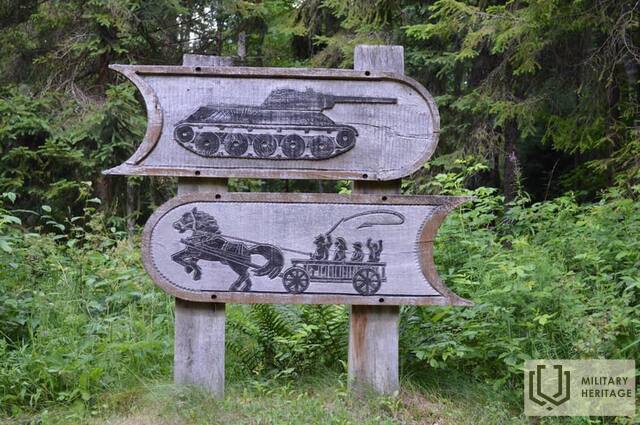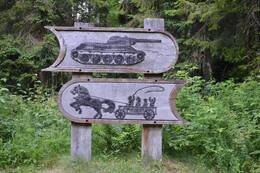Aizvīki in the Kurzeme Cauldron
In Aizvīķi Park, you can still clearly see the remains of World War II bunkers, trenches and caponier ramparts where weapons were stored. One of the types of weapons was the Katyusha rocket launcher system.
During the Kurzeme Cauldron from October 8, 1944 to May 8, 1945, the area around Aizvīķi was the 2nd line of the Soviet Army's front, or supply line, but trenches and bunkers were built in the park, as well as a place to store various weapons. One of these weapons was the Katyusha rocket launcher system, built on the basis of the American Studebaker US-6 truck. Briefly about the history of this combat vehicle -
On June 17, 1941, a presentation of the new military equipment of the Red Army was held at the Moscow training ground, the latest missile launcher system was demonstrated as the last. The demonstration made a very good impression on the leadership. The order to start serial production of these combat vehicles was signed after only 3 days, when only a few hours remained until the start of the war. On June 26, the first two serial vehicles, which received the designation BM-13, were completed at the Voronezh plant. They were designed to launch 132 mm rocket shells. This launcher was installed on the basis of a ZIS-6 truck. After the volley was fired, the missile system quickly changed its location so as not to come under a counterattack. The commanders had to be strictly accountable for the loss of each vehicle.
In April 1943, a unified rocket launcher system BM-13N was launched into production, with the aim of improving the technical characteristics of the machine and making production cheaper. The BM-13 N was mainly based on the American Studebaker US-6 truck, which was imported to the USSR under the terms of lend-lease. The BM-13N was capable of launching a projectile up to 8.5 km away and carried 16 shells with a crew of 5-7 people.
Several such missile launch systems were located in Aizvīķi Park, even after the end of World War II, and these places are clearly visible in nature.
Related timeline
Related objects
Testimonies of World War II in Aizvīķi Park
Aizvīķi Manor Park is located in Aizvīķi, Gramzda Parish, just a few kilometers from the Lithuanian border.
In Aizvīķi Park, the sites of bunkers and trenches from World War II are still clearly visible. One of the types of weapons was the rocket launcher system "Katyusha". Several such rocket launcher systems were located in Aizvīķi Park, even after the end of World War II, and these sites (caponiers) are clearly visible in nature.
This unique forest park, shrouded in secrets and legends, was created in the late 19th century as the Aizvīķi Manor Park, when the manor's baron von Korf planted the nearby hilly land with a pine and spruce forest. Later, walking paths were laid out in the 40-hectare area, other species of trees were also planted, and a pheasant garden was established.
In addition to the picturesque forest landscapes, there are also wooden fairy tale and legend characters, as well as stone sculptures that tell travelers events from the history of Aizvīķi and mark the cultural and historical sites in the park. The park also has a Green Class.
To better explore the cultural and historical heritage of Aizvīķi Manor Park, we recommend using the services of a guide.
Red Army bunker and caponiers in Aizvīķi Park
Aizvīķi Manor Park is located in Aizvīķi, Gramzda Parish, just a few kilometers from the Lithuanian border.
In Aizvīķi Park, the sites of World War II bunkers and trenches are still clearly visible. A Red Army bunker has been restored in the park.
One of the types of weapons during World War II was the Katyusha rocket launcher system. Several such rocket launcher systems were located in Aizvīķi Park, and even today these places (caponiers) are clearly visible in nature.
To better explore the cultural and historical heritage of Aizvīķi Manor Park, we recommend using the services of a guide.




